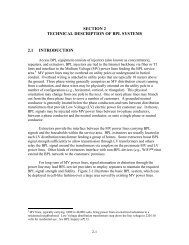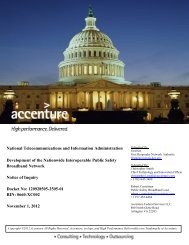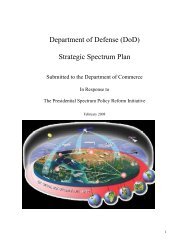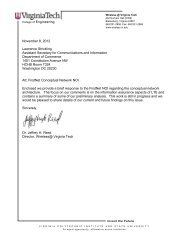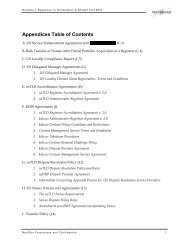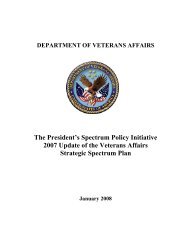NTIA State Planning RFI Response Final - National ...
NTIA State Planning RFI Response Final - National ...
NTIA State Planning RFI Response Final - National ...
Create successful ePaper yourself
Turn your PDF publications into a flip-book with our unique Google optimized e-Paper software.
• Available Towers<br />
o Location, AGL, ownership, current loading, backhaul capability,<br />
current use, hardening<br />
• Existing Fiber Infrastructure<br />
o Location, ownership, capacity, current use<br />
• Existing Microwave Infrastructure<br />
o Location, capacity, frequency<br />
• Potential network users<br />
o First Responders (Fire, Law enforcement, EMS)<br />
o Secondary Responders (Public Works, Transportation, utilities,<br />
etc.)<br />
• Potential Grade of Service frameworks based on the specific<br />
population, roadway and travel patterns within the state (e.g., urban,<br />
rural, suburban, destination centers)<br />
As mentioned, OIT believes these activities are central to the overall goal of<br />
the planning grants and therefore should be funded by the Program. These<br />
tasks will take significant effort in both human and capital resources.<br />
Additionally, OIT believes FirstNet should establish a standard classification<br />
mechanism for the assets to provide guidance to local entities on the type and<br />
format of information desired.<br />
Question 4: Existing Governance Structures<br />
OIT <strong>Response</strong><br />
While the current governance structures have been and continue to be critical<br />
for existing public safety communication systems, OIT believes a<br />
comprehensive review of governance is necessary to ensure success in the<br />
development and implementation of the PSBN. The technologies and<br />
business model that will be utilized moving forward are vastly different and<br />
provide an opportunity to revisit the governance structures in place. The<br />
effects of the PSBN will be felt across not just public safety but all public<br />
services and therefore require a comprehensive governance solution. The<br />
existing SWIC and SIEC models may work well in specific states but just as<br />
each state is unique in its service delivery methodology, the appropriate<br />
governance structures may differ as well. Additionally, one of the core<br />
requirements of the planning process is to engage the local communities and<br />
tribes, and performing this review will provide an excellent opportunity to





